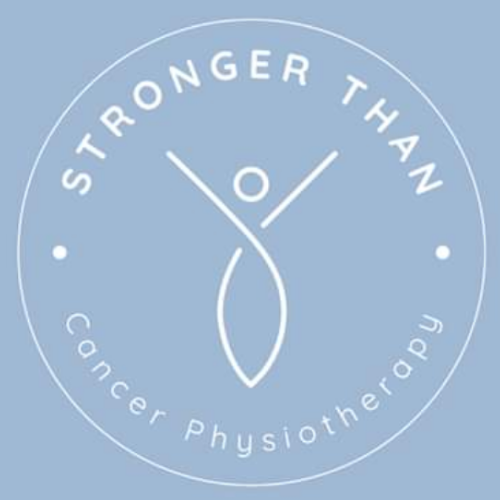Exercising with a PICC line during cancer treatment: is it safe?
Undergoing cancer treatment brings significant changes to your life, including your ability to stay physically active. While we know that staying active during cancer treatment is essential for achieving the best treatment outcomes, minimising side effects and maintaining quality of life, it can often come with various challenges.
During your treatment, you may have a Peripherally Inserted Central Catheter (PICC) line, which may leave you feeling unclear about how to exercise safely. While it’s important to prioritise safety and consult with your medical team before exercising during cancer treatment, the good news is that staying active with a PICC line is both possible and beneficial!
Why Physical Activity Matters During Cancer Treatment:
While it might seem counterintuitive when you're feeling unwell or fatigued, physical activity can offer extensive benefits during cancer treatment, including:
Improved mood and reduced stress: Physical activity releases endorphins, which can improve mood.
Increased energy levels: While it might seem paradoxical, regular moderate exercise can actually reduce fatigue.
Strengthened immune system: Regular physical activity can help support your body's natural defenses during cancer treatment.
Maintained muscle mass: Cancer treatment and inactivity often lead to muscle loss. Our muscles are metabolically active and maintaining muscle mass helps minimise side effects of treatment. Strengthening exercises and resistance training can help with this.
Reduced side effects: Exercise can help manage some side effects of treatment, such as fatigue, nausea, muscle aches and constipation.
Prevents blood clots: Regular movement can help prevent blood clots, which is particularly important on cancer treatment and when you have a PICC line!
Improved sleep: Regular physical activity can contribute to better sleep quality and help manage fatigue.
Exercising Safely with a PICC Line:
Having a PICC line requires some extra considerations when exercising. It is important to discuss this with your own medical or therapy team, but below are some of the main precautions for your guidance:
Talk to your healthcare team: This is the most important step. While it is generally positive to remain active during treatment, your doctor can advise on any individual restrictions based on your specific treatment plan.
Protect your PICC line: Keep the insertion site clean and dry. For this reason, swimming should generally be avoided while you have a PICC line. You can purchase waterproof dressings, but these may still allow water in which can cause complications. Consider using a PICC line cover or sleeve during exercise to protect it from bumps and snags. Avoid activities that could put direct pressure on the PICC line, such as contact sports or vigorous upper body movements, such as boxing.
Start slowly and gradually increase intensity: Avoid doing too much too soon. You should not exercise for the first 48 hours after PICC line insertion. Thereafter, you may begin with gentle exercises and gradually increase the duration and intensity over a period of days and weeks, with rest days in between. This can help you assess any adverse effects of exercise and amend appropriately.
Listen to your body: Pay attention to any pain, discomfort, or swelling around the PICC line. If you experience any issues, stop the activity immediately and contact your medical team or therapist for further advice.
Choose low-impact activities: Activities like walking, light yoga, or cycling on a stationary bike are often good options. Avoid high-impact activities that could disrupt or catch the PICC line.
Avoid excessive pressure on PICC: Lifting heavy weights can put strain on the PICC line and increase the risk of complications. If you plan to continue weightlifting, please seek personalised advice from your doctor and a specialist oncology physiotherapist. Body-weight activities, such as holding a static plank can also increase pressure on PICC; amending these to more dynamic movements may be preferable.
Stay hydrated: Drinking plenty of water is essential, especially during and after exercise.
Examples of Exercises You Might Consider:
Walking: A simple, accessible and under-rated form of exercise that can be easily modified to your fitness level, e.g. walking speed, inclines, different terrains.
Yoga: Gentle yoga poses can improve flexibility and balance. Avoid static poses that put pressure on the arm with the PICC line, such as plank or static downward facing dog.
Cycling (stationary bike): A good cardiovascular workout that is low-impact and easily modified to suit your fitness level.
Gentle stretching: Regular mobility can help improve flexibility and range of motion.
Summary:
Staying physically active with a PICC line is beneficial and safe, if you take a few important factors into consideration. By waiting 48 hours after insertion and avoiding activities that will increase risk of infection, excessive pressure or dislodging and opting for controlled, lower impact activities, you can achieve the benefits of exercise without any adverse effects that may affect your PICC line and treatment. This blog post outlines general information and should not be considered as personalised medical advice. You should always consult with your own medical team before starting or changing your exercise routine during cancer treatment, as they can provide recommendations based on your individual circumstances.
If you are looking for personalised advice about staying active with a PICC line, please get in contact with me or book an appointment with me to get started now!

